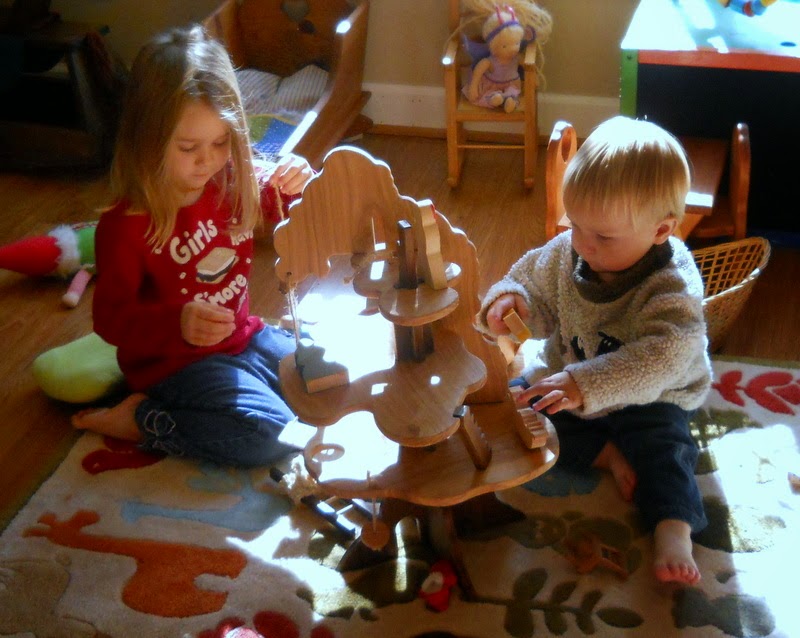| Play is the mechanism by which children learn—how they experience their world, practice new skills, and internalize new ideas—and is therefore the essential “work of children”. |
Showing posts with label shells. Show all posts
Showing posts with label shells. Show all posts
Friday, June 21, 2013
Bringing Nature In :: Part I :: The Playroom
Through play, children learn
When people hear that I am a Waldorf homeschooler, the first question they usually ask is, “What is Waldorf “? The second most times is, “I love your toys, but why so simple? Why open ended? Do they really help”? Well, I am here to say that yes they do help and it's not just Waldorf teachers and advocates who say this. It's also prominent child developmental psychologists, former public school teachers, and linguists who say the same thing- that children need to play, that their play does not need to be tinkered with by adults, and that children need suitable, simple, opened ended toys to play with in order to get the most out of their play. This is precisely where Waldorf, and other educational philosophies, get it right and do it well.
What then could be more simple that having a basket full of natural toys in your playroom? You don't need expensive blocks. You don't even need expensive toys. Really a basket of shells, rocks, and pine cones will do!
So this Autumn, as your child’s play turn inward and takes place indoors more often, why not try bringing more nature in? Reassess what toys you have in your home and how you have set them up. Does every toy have an simple home to sit when play is done? When you sit in the room do you feel calm or cluttered? If your answer is the latter, than your child might feel the same way too. Over and over again as I was researching why natural simple and open-ended toys were best, again and again, researcher after research said that the simpler the play materials, the more effective they are at stimulating play. And if play if the child's' most "essential work" then ensuring that we bring nature indoors for them and having open ended toys for should therefore be our essential work as their parents.
Labels:
natural toys,
nature,
pine cones,
rocks,
shells,
waldorf playroom
Subscribe to:
Comments (Atom)








